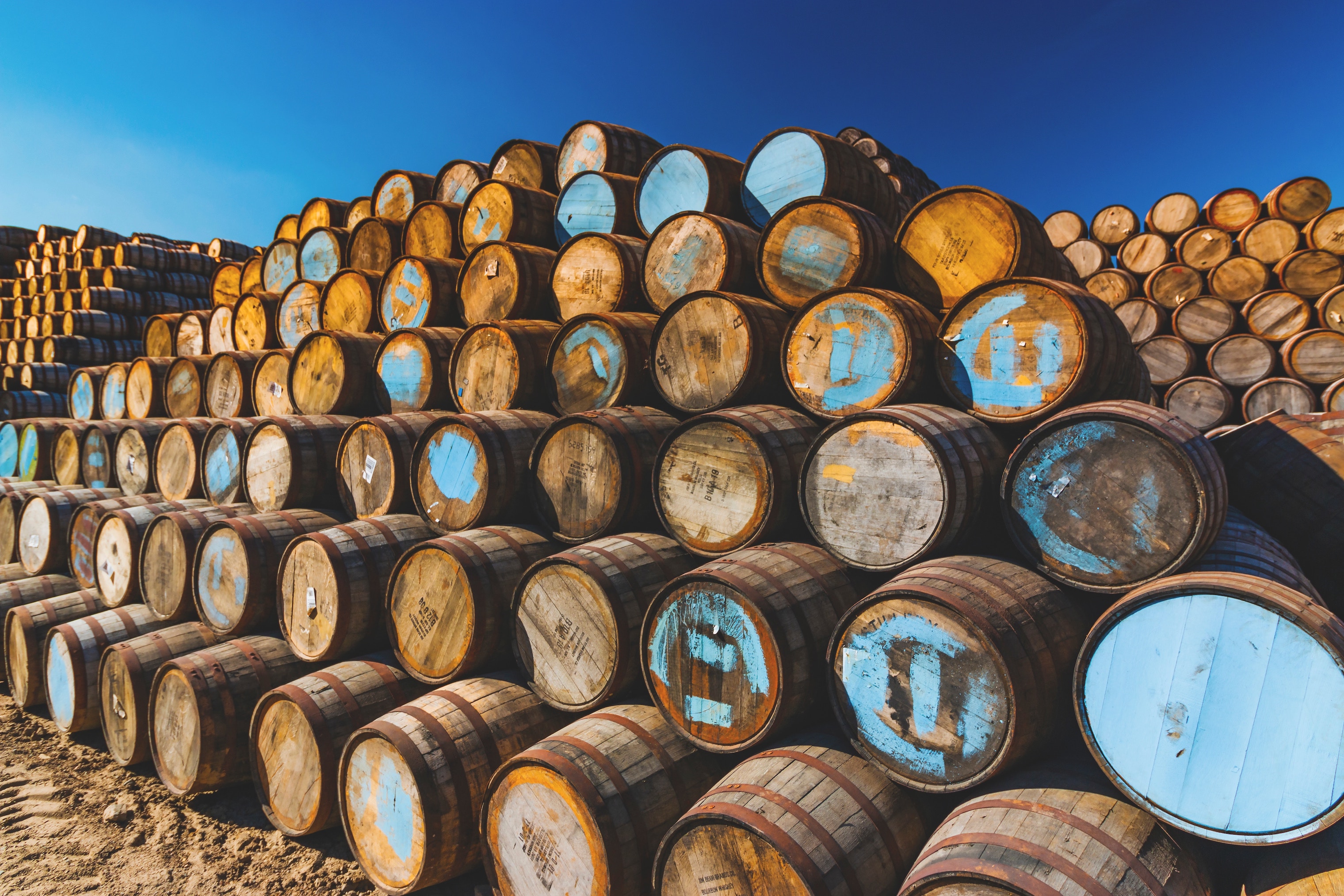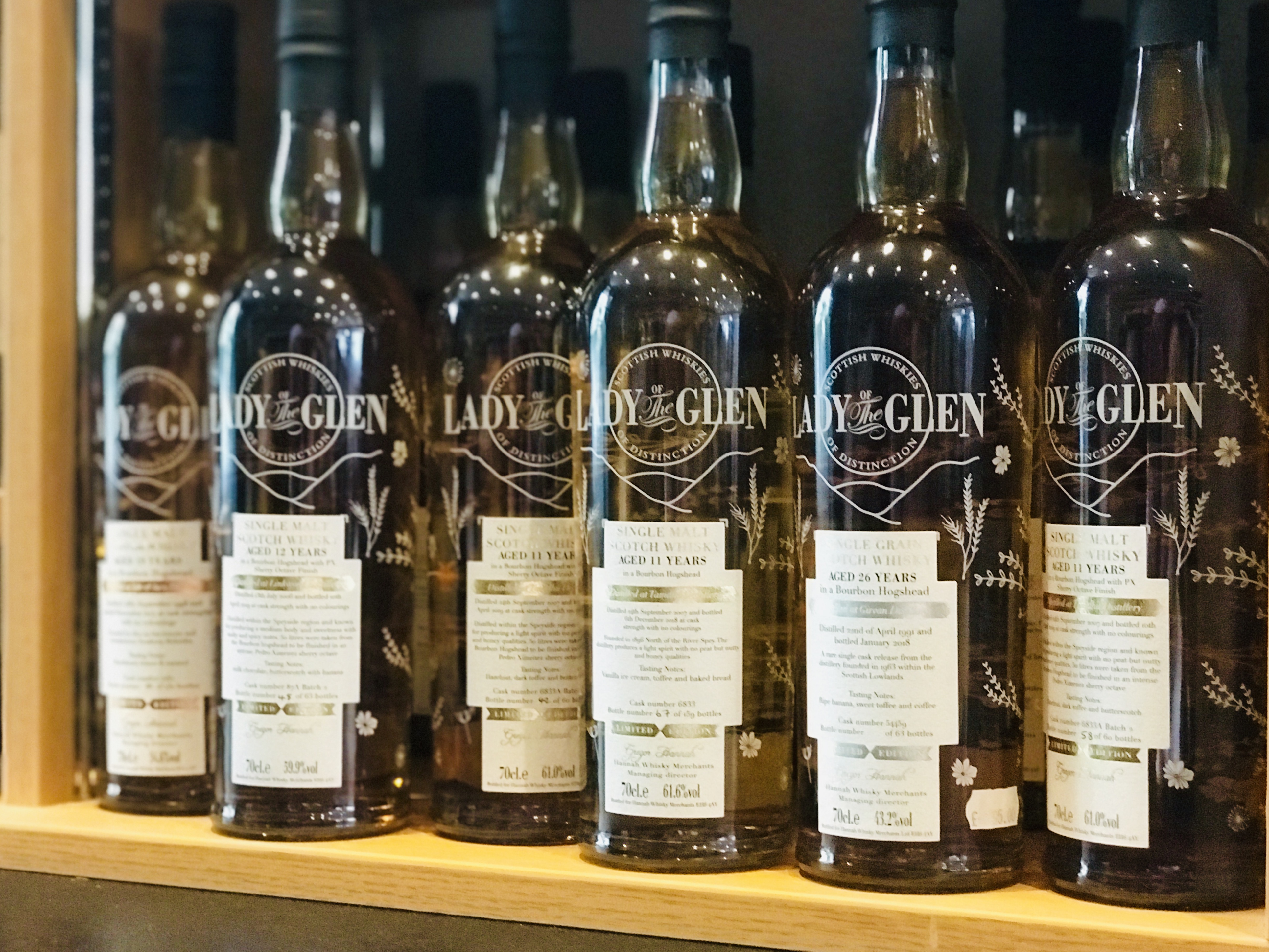Gregor’s Guide To Finishing

Going forward Lady of the Glen will be releasing many whiskies that are finished. Admittedly, this is not innovative by any stretch as finishing has taken place within the industry for many years. However, Scotch itself is a wonderfully diverse product, with different flavours appearing within different regions, from over 130 different distilleries that produce different vintages of whisky in uniquely different casks. There is so much variety in Scotch compared to other spirits and the industry could do better to celebrate this diversity compared to our competitor spirit categories.
My goal is for Lady of the Glen to be releasing the finest quality whisky consistently but with a view to release diverse flavours from authentic cask sources. I want to produce whisky for drinking which is not standard. Every cask is unique and has a story and by building relationships with the bodegas in Europe, I’ll be able to release casks that have a traceable and high-quality authenticity.
Finishing is the approach of re-racking a cask into another cask, which means pouring the contents of one cask into another. The aim of the process is to allow the spirit to take on the flavour characteristics of a different cask from that which the spirit was originally matured in. Lady of the Glen is looking to conduct long term finishing projects so that each cask of spirit is getting adequate exposure to the oak although this will be dependent on the cask size and type of spirit/wine that the cask previously contained.
Around 90% of the whisky industry is matured in Bourbon hogsheads and yet Sherry single malt releases tend to be the most popular. The solution to this is to re-rack a bourbon cask into a Sherry cask in order to let the spirit absorb some of that Sherry flavour and colour from the oak. However, finishing has developed a bad reputation because it has been used to mask poor flavour notes by covering them up with the more intense flavours from the re-racked cask and it is generally looked down up by parts of the industry because it can be construed as passing off a whisky as something that it’s not i.e. a whisky matured in a bourbon cask for 12 years then re-racked into a Sherry cask for a very short time will be identified as a Sherry release but have very little of a sherry matured whisky characteristics.
The SWA places a number of restrictions on the process, for instance, a re-racked cask can no longer be called ‘a single cask’ that is despite the re-racked cask being a single cask and no vatting or blending of other casks at any stage. The finished whisky must still possess the character and traits of a whisky. The re-racked cask must also have a history of being used in the Scotch whisky industry.
The SWA’s strict requirements ensure whisky from Scotland is always of high quality. The main criteria are that:
- Whisky must be matured for at least three years to be called whisky.
- Whisky can only be made from water, malted barley and yeast. There can be no additives aside from caramel colouring and water.
- Whisky must be bottled above 40?V and distilled at a strength no higher than 94.8?V.
- The cask must be made from oak.
- All maturation must take place in Scotland and the production of materials must take place in Scotland. The SWA also specifically require all mashing of the cereals, conversion into a fermentable substrate, fermentation and distillation to take place at the same distillery. Note, that the sourcing of barley and malt is not mentioned and this because barley has been imported and most distilleries buy in their malt from a malster in Scotland. To identify distilleries that conduct their own malting, you should search for distilleries that have floor maltings and Tom Bruce-Gardyne’s article on Floor Maltings at ScotchWhisky.com is also an interesting read.
- A recent change in the regulations has been what the oak cask previously contained. The reason Scotch is matured in Bourbon, Sherry and Port Casks is that there is ‘traditional evidence’ of this taking place. In order for a distillery to use a new or different cask that has previously contained something like Tequila, they had to show evidence of this having taken place in the past and that it was a ‘traditional’ method. Despite there being evidence from distilleries and warehouses maturing whisky in every type of oak for the maturation of everything from ginger beer to Sherry, the Scotch whisky industry limited itself. However, as of May this has changed, Scotch can now be matured in oak casks that have been used to mature wine (still or fortified) and/or beer/ale and/or spirits with the exception spirits produced from stone fruits and wine/spirits/beers where flavourings have been added.

Through this Lady of the Glen aspires to be a reliable source of authentic Scotch providing quality examples of European oak married with the finest in Scottish distillate.
Our releases include:
Glenlossie Vintage 2010 with Tawny Port finish
Glen Elgin Vintage 2008 ex-Tawny Port cask finish
Glenlossie Vintage 2010 with ex-Ruby Port finish
Deanston Vintage 2000 with PX finish batch 2
Tamdhu Vintage 2007 with PX finish batch 2
Glen Moray Bourbon Barrel with PX Sherry octave finish batch 2
Linkwood Vintage 2006 PX finish batch 2
To find out more about all the Lady of Glen whiskies check out our online shop.